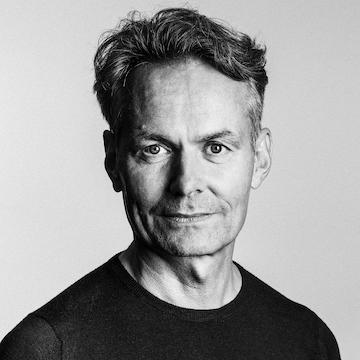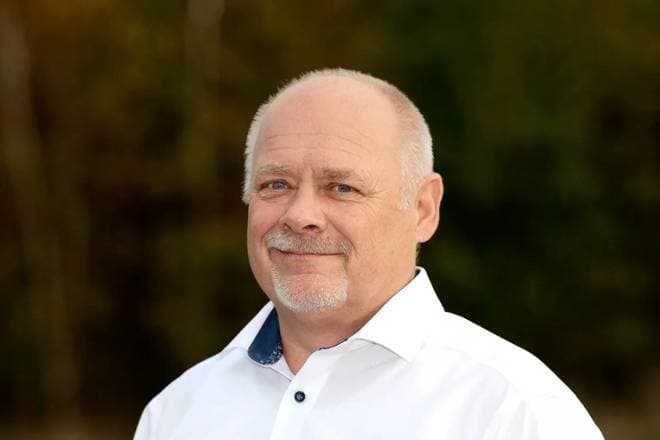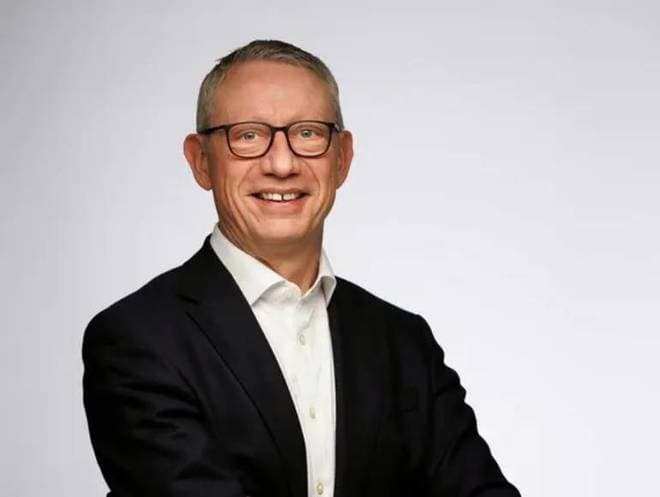
Zürich: Announcement came at the end of August. The Swiss energy company H2 Energy Europe will build Europe's largest PtX plant, and it will be ready in 2024 just outside Esbjerg. The 11-hectare plot for the purpose is located in Veldbæk, and in Denmark's fifth largest city it is known as the Siemens plot.
The plan was more than a decade ago for the wind turbine manufacturer Siemens to have built a factory here. But it never came to fruition, and it has not been forgotten. "Will it come to anything this time," is heard again and again in the city. It also doesn't help that the project is once again being promoted by an eager mayor.
Hardly 1200 km to the south is H2 Energy European in Zurich, and even in the midst of another corona autumn, director Clifford zur Nieden is happy to accept interview visits to the company's premises.
Around 20 employees have space in the large, bright, multi-level office on the fourth floor. There is a relaxed and pleasant atmosphere. - Cliff, the director introduces himself, and we are quickly showered.
It is a modern company, and I quickly greet Rolf Huber, CEO of H2 Energy. The two have worked together for the past 20 years, and share an office adjacent to the meeting room.
Construction start 2022 – or when a hydrogen pipeline is decided
- We expect to start building at the end of 2022, says Clifford zur Nieden with a certainty and optimism that inspires confidence.
But there is just one but, and it's a big one, because the upcoming PtX plant in Esbjerg at a GW will produce hydrogen in raw quantities. The plan is for the hydrogen to be sent on to Denmark and Europe for use in trucks, cars or for conversion into methanol, gas or ammonia.
- We will produce 90,000 tonnes of hydrogen per year. We can't drive them away in 500 kg containers, so we need a pipeline for the hydrogen, he says, while showing an overview map of a possible pipeline in Denmark.
Will the PtX plant come to Esbjerg if there is no Danish pipeline for the hydrogen?
- The plant will come when there is a pipeline for the hydrogen, or it is planned. If it is planned, we will also start construction next year. After all, it also takes time to build the plant, observes Clifford zur Nieden.
He also already knows what a pipeline for the hydrogen will cost per km.
- It is not that expensive, it will cost around DKK 5.6 million. DKK per km, he says.
Clifford zur Nieden also rules out that the hydrogen could possibly be transported via the natural gas network.
- There is a difference in the thickness of the steel, and the natural gas grid must also still be used for natural gas, says Clifford zur Nieden.
Danish pipeline for hydrogen in 2022?
At Energinet, the discussion about a Danish pipeline for hydrogen is not new, and as the owner of the Danish energy grid, the company has information ready about the possibility on its website. However, this does not indicate that a pipeline for hydrogen will be in place at the end of 2022.
- With the hydrogen projects and quantities we are gradually talking about, we are past the point where future production can only be used locally or driven around in trucks. But to what extent and where and when we will possibly see excavators in the landscape laying hydrogen pipes in the ground is still quite uncertain, says Stine Grenaa Jensen, area manager at Energinet.
- We need that hydrogen pipeline so we can store the energy in the hydrogen. It is important and significantly cheaper than expanding the electricity grid, where there is no storage option, explains Clifford zur Nieden.
There is another reason why he sees great advantages in a hydrogen pipeline from Denmark.
- It would provide good opportunities to transport the energy from the north to the south of Germany, where the need is, says Clifford zur Nieden.
Esbjerg was also chosen because things usually go a little easier in Denmark than elsewhere in Europe.
- We can see how things just progress with the Fehmarn Belt connection on the Danish side, while nothing happens in Germany. Everything is just more straight forward in Denmark. Therefore, Denmark has the potential, says Clifford zur Nieden, who has also experienced a "pushy" Esbjerg Municipality in connection with the purchase of the land for the PtX plant.
But the director now sees this as a somewhat positive sign. Denmark has won over countries such as Germany, the Netherlands and Spain, but those countries are not completely ruled out for H2 Energy yet.
The experience from Switzerland must help Denmark
H2 Energy already has experience with the transport of hydrogen in 20-foot shipping containers, because the company, together with Hyundai, has completed a successful pilot project with hydrogen trucks in Switzerland.
In Switzerland, the company thus delivers 200 tonnes of hydrogen produced by hydropower to ten filling stations in the country. This project is owned 75 per cent. of Hyundai and 25 per cent. by H2 Energy. The prehistory begins in South Korea, where Hyundai is at home.
- Hyundai is a large manufacturer of trucks, but they have chosen not to enter the European market because the competition is already extremely tough in Europe. But with hydrogen trucks there are no competitors, so that's why they chose to bet here, says Clifford zur Nieden.
Hydrogen has several advantages over e.g. electric trucks.
- It only takes ten minutes to refuel a truck with 30 kg of hydrogen, and it can drive 450 km on it, says Clifford zur Nieden.
In Switzerland, hydrogen trucks are promoted, because trucks running on fossil fuels pay more in the so-called LSVA tax. It was introduced in 2001 to reduce truck traffic in Switzerland.
- An ordinary truck pays up to DKK 375,000 a year, but hydrogen trucks get off cheaper, says Clifford zur Nieden about the tax, which is very similar to a CO2 tax.
There is a need for either a CO2 tax or demands from companies if the green transition is to succeed.
- Diesel is insanely efficient, which is why it requires the will to switch. In Switzerland, we are already seeing that Nestele wants its Nespresso capsules to be transported climate-neutrally, says Clifford zur Nieden.
He is absolutely certain that the PtX plant will come to Esbjerg and much more than that.
- I could well imagine that it was up to ten GW - because it is scalable, so it can be made bigger later, concludes Clifford zur Nieden.
Text, graphics, images, sound, and other content on this website are protected under copyright law. DK Medier reserves all rights to the content, including the right to exploit the content for the purpose of text and data mining, cf. Section 11b of the Copyright Act and Article 4 of the DSM Directive.
Customers with IP agreements/major customer agreements may only share Danish Offshore Industry articles internally for the purpose of handling specific cases. Sharing in connection with specific cases refers to journaling, archiving, or similar uses.
Customers with a personal subscription/login may not share Danish Offshore Industry articles with individuals who do not themselves have a personal subscription to Danish Offshore Industry.
Any deviation from the above requires written consent from DK Medier.





























